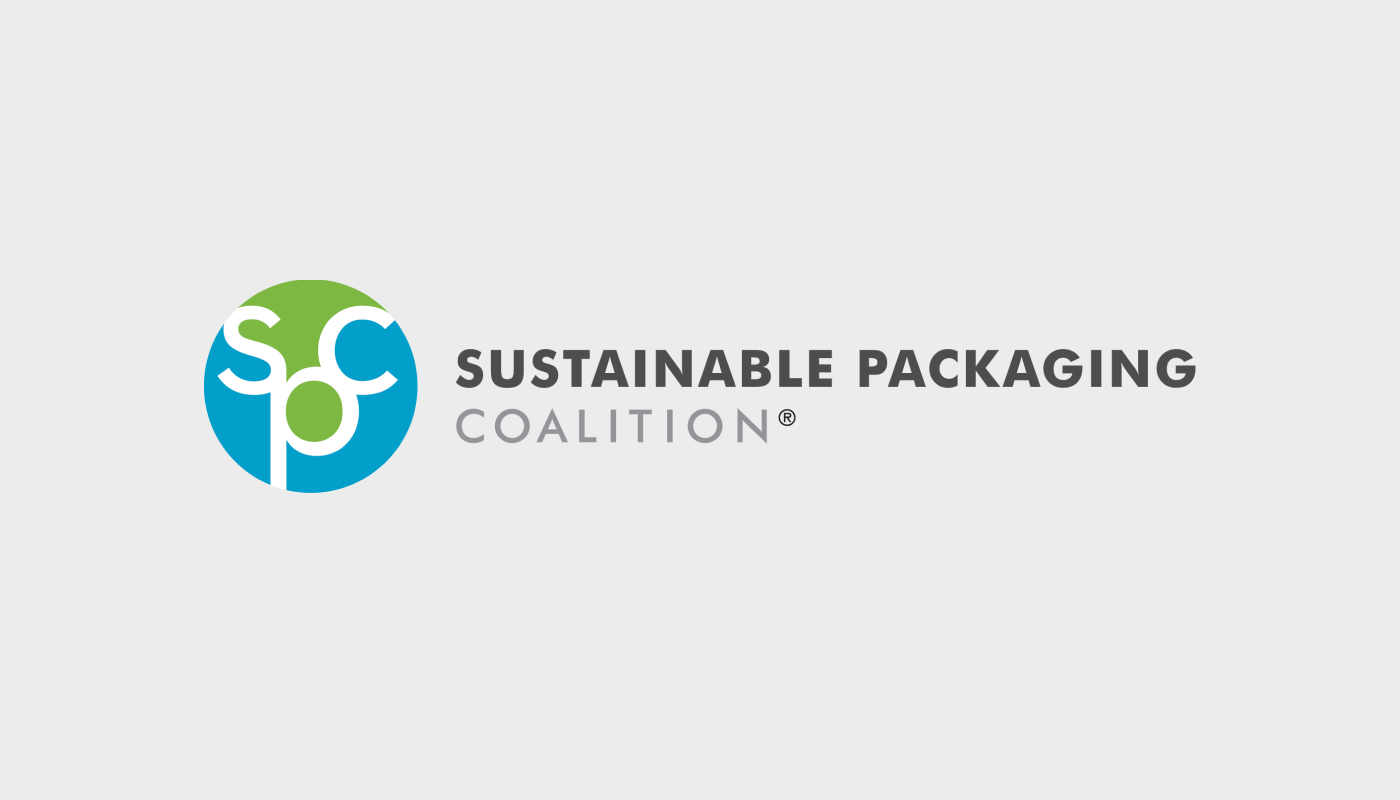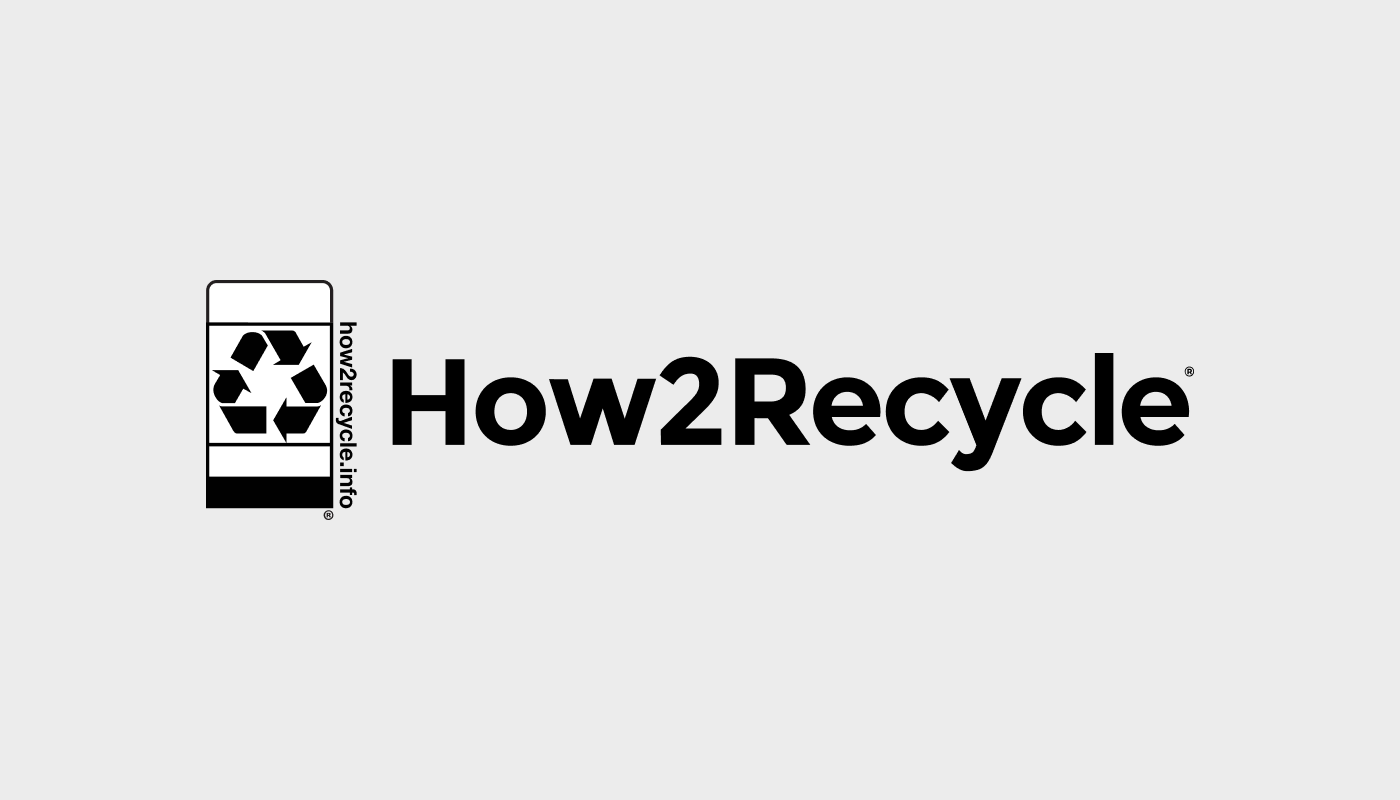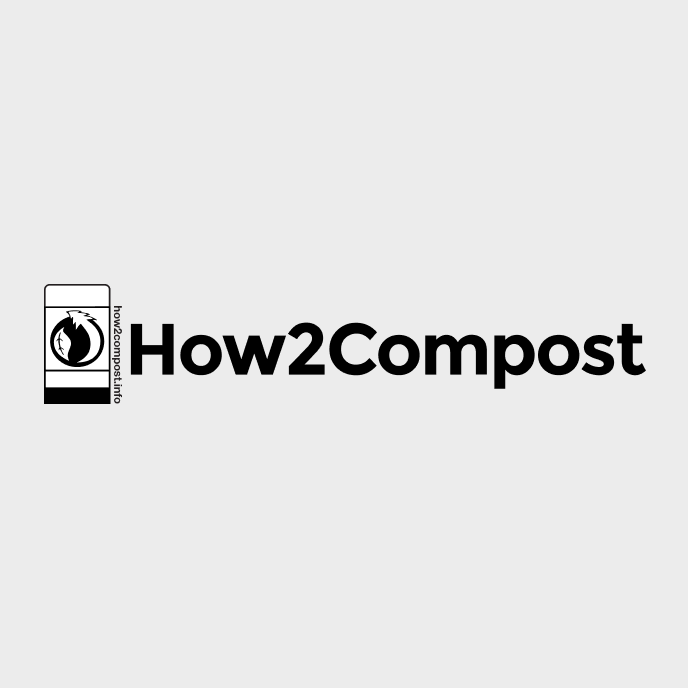Effective July 31, 2021, the How2Recycle® label program is establishing new criteria for when material health considerations will impact recyclability claims. This is not entirely new for the How2Recycle program to touch on material health issues; in January 2020, How2Recycle announced that any packaging that contains intentionally added per- and polyfluoroalkyl substances, or PFAS, will be labeled Not Yet Recyclable. Now for broader purposes, How2Recycle would like to provide objective, clearly articulated criteria to share with members and the general public when it might render a package Not Yet Recyclable in the future due to the presence of a harmful or potentially harmful material.
New material health rule for How2Recycle
How2Recycle may render a package Not Yet Recyclable if it contains intentionally added substances that are harmful or potentially harmful to the environment and/or human or nonhuman animal health.
Reasoning for the rule—why does it exist?
Material health is typically perceived as a distinct concept within the sustainable packaging life cycle, separate from whether a package is designed for recovery. However, How2Recycle believes it’s important to include it as a relevant consideration for issuing recyclability claims for the following reasons:
- Harmful or potentially harmful substances will or could substantially limit the successful circularity of a material long term.
- Precautionary principle: the principle that the introduction of a new product or process whose ultimate effects are disputed or unknown should be resisted. GreenBlue supports this concept.
- Trust of the How2Recycle label and its members in the eyes of the general public.
- Trust of recycled materials in the eyes of the general public.
How will the rule work?
From time to time, How2Recycle may examine a material more closely in order to determine whether packages containing that material should be rendered Not Yet Recyclable because of material health concerns.
These materials are at this point considered under review.
How2Recycle may place materials under review in the presence of one or more of the following conditions:
- How2Recycle becomes aware from credible scientific sources that a material used in packaging that is currently labeled as recyclable could potentially cause harm to the environment or human health
- How2Recycle has reason to believe that a material used in packaging that is currently labeled as recyclable may be substantially similar to another material known to cause harm to the environment or human health
These materials of concern may be present or potentially present in packaging in the following ways:
- Additive
- Process aids
- Materials
- Material precursors
- Coatings
- Fillers
Priority & sequence of under review
How2Recycle may be monitoring multiple materials at any given time to assess whether they should be put under review. It is likely that How2Recycle will take a phased approach to putting materials under review in order to manage operational complexity—meaning, even if there are several candidates to potentially place under review, the program may end up only choosing one or two at a time to tackle. How2Recycle may prioritize placing certain materials under review for a variety of reasons at its sole discretion, including:
- level of risk of harm to environment or health characterized in scientific literature,
- prevalence of use in packaging,
- understanding of and availability of safer alternatives, and
- relevant legislative or regulatory action.
The review process
When a material is under review in How2Recycle, the program will conduct its own investigation or research in order to determine whether packages containing the material should be rendered Not Yet Recyclable due to material health concerns. This process may include reaching out to the manufacturers of these materials and converters who work with these materials to better understand their chemistry, reviewing scientific literature in detail, and contacting other environmental nonprofits, governmental entities or scientists for relevant information. At the conclusion of the review period, which can differ in length based on the circumstances, How2Recycle will announce any changes to recyclability to its members and the general public.
In 2020, How2Recycle placed PFAS for PE films (primarily used in process aids) under review. The conclusion of that review is included at the end of this article.
There are several potentially determining factors for How2Recycle to consider in assessing whether an item should be deemed Not Yet Recyclable due to material health concerns. There are other factors that could provide additional context to the assessment process but will not be considered determining or authoritative criteria.
The following considerations are potentially determining factors for How2Recycle to prohibit recyclability claims due to material health concerns:
- Potential harm to human or nonhuman animal health or the environment. This includes the material at issue potentially disrupting biological processes or causing potential harm to a species’s ability to thrive. For example, whether the material causes or may cause cancer, birth defects, reproductive harm, harm to body systems such as endocrine systems, or genetic damage. Potential harm may derive from skin contact, ingestion or inhalation of the material. Also considered is potential harm to the environment, such as negative impacts to water quality, biodiversity, plants, soil or air quality. Potential harm to humans or nonhuman animals, other organisms and/or the environment may occur during manufacture, use, or recovery of the material.
- Persistence of the material. This refers to the material’s persistence in human or nonhuman animal bodies or other organisms, or the environment, and/or the length of exposure to bodies or the environment.
- Stability of the material. This refers to potential changes in composition in the product due to chemical or biochemical reactions that may occur, such as oxidation, polymerization, depolymerization, enzymatic degradation, hydrolysis, thermolysis and photolysis. The more stable a material is, the slower it may be to break down in the environment.
- Mobility of the material. This refers to the material’s ability and likelihood to migrate from packaging to the surrounding environment, or to human or nonhuman animal bodies or other organisms.
- Bioavailability of the material. This refers to the material’s ability to enter into circulation when introduced into the human or nonhuman animal body or other organisms and so is able to have an active effect.
- Bioaccumulation of the material. This refers to the gradual accumulation of substances in the environment or in human or nonhuman animal bodies or other organisms.
- Solubility profile of the material. This refers to whether and to what extent the material is soluble in water, fats, oils or other substances.
- Potential impacts of the material’s degradation products. Whether or not the degradation of the material makes it safer or not depends on the chemical in question. For example, some materials of concern break down into harmless products, others break down into hazardous products, and others do not break down at all and are considered “forever chemicals.” Some degradation products may possess different harm, persistence, stability, mobility, bioavailability, bioaccumulation or solubility characteristics than the material in question.
- Tradeoffs of the material’s use in packaging. There may be environmental benefits to the material such as it enabling lower energy use or less material use. These considerations should be considered and weighed against potential health risks.
- Whether or not safer alternatives exist for the material. Regrettable substitutions should be avoided. Alternatives should be closely scrutinized to ensure they do not pose the same or substantially similar material health risks as the material at issue. Additionally, the relevant tradeoffs for the alternative should be considered.
- Legislative or regulatory action. This refers to whether governmental bodies are seeking or potentially seeking to create laws or regulations around a specific material because of material health concerns.
The following considerations are potentially relevant context but are not determining (not authoritative; not controlling) factors for How2Recycle to prohibit recyclability claims due to material health concerns:
- The overall value to the industry or the general public of the material under review in packaging; usually is associated with performance, packaging functionality or cost
- The level of difficulty, complexity, inconvenience or cost for industry to pivot to a safer alternative
- Whether governmental bodies or various organizations, in North America or abroad, have characterized the materials as either safe or hazardous or potentially hazardous.
- The level of media attention given to the safety of the material and the quality of that reporting.
What helps How2Recycle make the assessment
Material health issues are complex and are often difficult to research and analyze, so complete understanding of an issue may be elusive. That said, How2Recycle endeavors to explore the following factors where feasible:
- Understanding breadth and drivers for the material’s use
- Understanding varieties of the material that may exist and why certain varieties are used in different contexts
- Understanding how the material is made and how it’s used in the packaging manufacturing process
- Understanding the chemistry of the material itself as well as its chemistry when applied to packaging
- Understanding the potentially relevant biology considerations in relation to the material’s potential impact on human or nonhuman animals and other organisms
- Understanding potential impacts to the environment and/or human health of the material during its life cycle, including production, consumption and recovery (including, as relevant: reuse, mechanical recycling, chemical recycling, composting, waste to energy, landfill). This could involve how the chemistry may or may not evolve through these stages.
- Understanding potential impacts to health across relevant groups such as manufacturing workers, retail workers, end users, and local communities or ecosystems.
- Understanding whether alternatives exist, and whether those alternatives are:
- Commercially available
- Likely to be used
- Studied and well-understood to be safer from a material health perspective
- Available scientific literature on any and all of these concepts
- Trustworthy and scientifically credible literature on these topics from governmental entities, companies or other organizations such as NGOs
Overarching principles
- How2Recycle wants to make the scope of a ruling on a material narrow enough as to not be overbroad, unreasonable or overly burdensome, but also not overly specific to unintentionally create loopholes for similarly hazardous materials to slip through.
- How2Recycle follows an objectivity, science-based and systems-thinking approach.
- How2Recycle will do its best to appropriately define and characterize the material at issue since confusion, synonyms, and competing definitions are rife in this space.
- The rule should align and not conflict with existing standards of material health but will likely operate at a shallower level. This is because other schemes provide a more comprehensive risk assessment of a material, or are designed to achieve ideal or even aspirational material health outcomes.
- The How2Recycle program does not endeavor to become a comprehensive material health assessment body, but rather wants to ensure that by calling certain items recyclable, the program is not perpetuating or enabling wide-reaching and/or known toxicity in the circular economy. How2Recycle acknowledges both the limits and possibilities of its reach and influence in the sustainable packaging space, and seeks to navigate this space in a deeply pragmatic yet principled way. In the future, How2Recycle may consider more explicit alignment with any of the following potentially relevant standards, methodologies or tools:
- Cradle2Cradle
- Bluesign
- ZDHC
- Detox Campaign
- HIGG Material Sustainability Tool (MSI)
- CHEM-IQ
- GreenScreen for Safer Chemicals
- The Sustainability Consortium
- OEKO-TEX Standard 100
- Safer Choice Master Criteria
- SciveraLENS
- ChemFORWARD
- Others
- Depending on the material at issue and availability of analytic techniques, How2Recycle may or may not allow third party lab testing to demonstrate an intentionally added material is present at a certain loading.
Update on How2Recycle’s position on PFAS in polyethylene film
In January 2020, How2Recycle announced that any packaging that contains intentionally added per- and polyfluoroalkyl substances, or PFAS, will be labeled Not Yet Recyclable. While this rule was initially targeted at fiber packaging, How2Recycle came to realize the breadth of use of fluoropolymers used in processing aids in polyethylene (PE) film. Over the last year, How2Recycle paused issuing Store Drop-off labels for these items and placed PFAS in PE films under review. The program took time to investigate the material to understand whether these fluoropolymers should render PE film Not Yet Recyclable due to material health concerns.
How2Recycle examined best available evidence to assess the potential harm to the environment and human and nonhuman animal health of these materials, their prevalence and use in films, and the availability of safe alternatives. During the review process, How2Recycle conducted a scientific literature review, studied NGOs’ and other scientific bodies’ stance on PFAS, reviewed proposed and enacted legislation and regulation in North America and globally, and contacted fluoropolymer manufacturers, film manufacturers, film converters and other experts. This process informed the development of How2Recycle’s new material health rule detailed above.
Based on the conclusions of this review, PE films containing fluoropolymers used in processing aids, mold release agents, or other additives are eligible for a Store Drop-off How2Recycle label at this time. However, PFAS use should be minimized and ultimately phased out in favor of safer alternatives to avoid the intentional contribution of environmentally persistent hazardous chemicals to the recycling stream. How2Recycle will continue to monitor the use of PFAS in packaging and the development of safer alternatives. This rule may change in the future.
Material health is complex and it can be difficult to understand an issue entirely. While these fluoropolymers are similar to PFAS of concern because they are environmentally persistent, ultimately How2Recycle concluded that there are sufficient differences to not render their use Not Yet Recyclable at this time. Specifically, it appears the higher chemical and biochemical stability, higher molecular weight and lower mobility of these fluoropolymers limits their environmental and health hazards compared to other PFAS. Additionally, using fluoropolymers during film manufacturing reduces energy requirements and has resulted in thinner films and films using more recycled content. While these attributes are well documented, the fate of these fluoropolymers during the manufacturing, use and end of life of PE films is less understood and further research is needed. How2Recycle challenges its members to work towards a greater understanding of:
- The stability of these fluoropolymers during film conversion processes such as cross-linking, ink-curing and surface treatments
- The hazards associated with mechanical and chemical recycling of PE films containing these fluoropolymers
If you have any feedback on this material health rule, please submit comments to how2recycle@greenblue.org in the interest of continuous program improvement.








